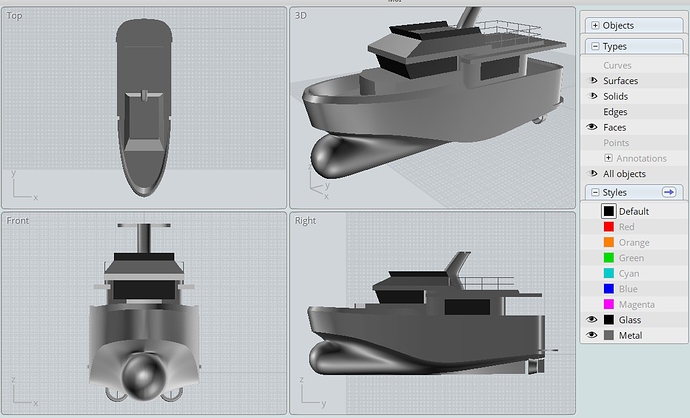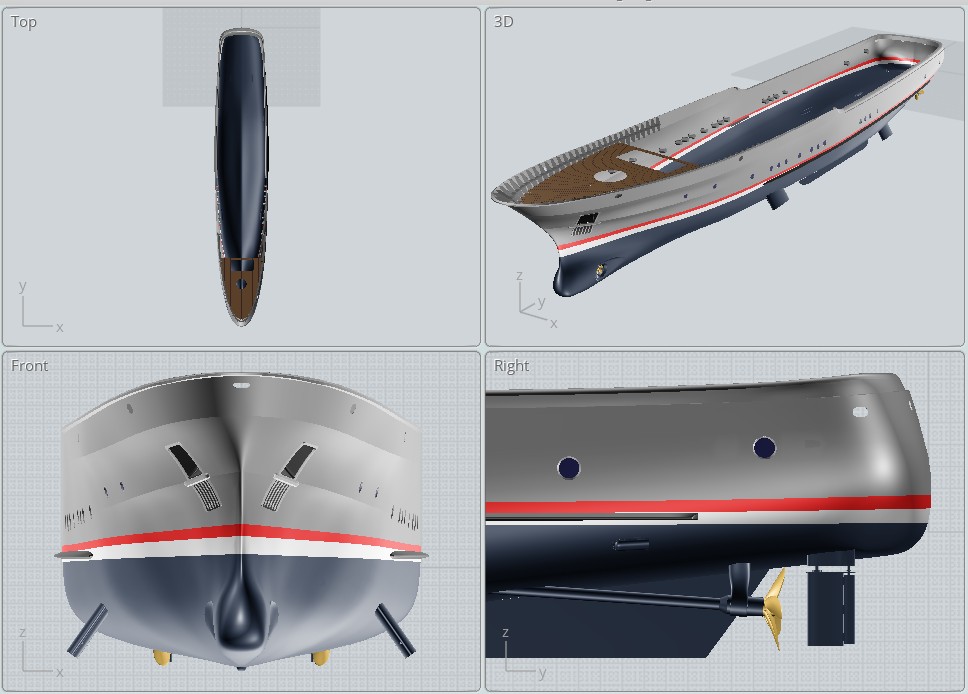Nope but I will in the future.
HI There, is there a elegant way of getting a VRML1 file?
Another app that menage VRML1 in visual mode is gCAD3D but command line application is better…
Sadly , I think Iam to stupid to use a Commandline tool… 
Would it be possible to set up commandline tool the way that it executes VRML conversion on a standard Folder? Like checking Folder, and if there is a *.obj File, it converts it and saves it in the same Folder, with the same Name etc…
Or much better: Just have a Python Script inside Blender, Something like: take the selected Mesh and send to external Converter Tool…
Or, I saw once a Guy, he Set a comandline Conversion Tool (Alias2CatPart) so you could drag and drop the File onto the Executable- and It would just simply convert the File and save it into the same Folder as the Converter-Tool…
I actually found a slightly more elegant way for my taste-
So iam using meshconv with a .bat (Batchfile)- I put all the parameters in there just once, and reuse it everytime I want to convert to .wrl
Its really working great- I just have to drag and drop that (obj) File onto the *.bat, and get intsantly the converted wrl!
I never knew that it would be so easy  (just needed a little hint of a coworker and some help from google)
(just needed a little hint of a coworker and some help from google)
Now after converting a few Files to iges using FreeShip- I realise that it cannot handle any Starpoints-
I was hoping for a decend continuity as long as I keep the mesh quadonly… but it has problems when more than 4 edges are conected to one vertex ![]()
is there any trick on how to improve the result?
No for now, I dont have any solution maybe I will talk with developer for a better exporting.
But if you need cheap solution and if can afford there is Moi3D that make a nice conversion from subdivisions surface, with a script or with underdevelopment available if you purchased a license.
But if I discover more ways I will share these here.
Hello i cant move verticeise in editing mode can someone help i cant upload attatchments
Hi, but what vertices, you mean in Blender edit mode? if yes please open a specific topic, about that, or maybe explain better. to upload compress with zip extension your this file.
There is one more way that I know if, but I would say it’s freemium because it’s free for personal use, but you have to pay yearly if it’s commercial, and that’s Fusion 360. You can import your model as mesh there, obj or fbx are both fine. And convert to subdiv, which it has built in, and then you can convert that to nurbs. It works perfectly, however, you have to redo all of your sharp edges.
The other thing is your model still needs to be good. If you used boolean or something like that in blender without baking that and modelling the edges correctly, it’s not going to look good.
If you have a model and the Last thing you did in blender was to add a subdiv modifier, it will look the same in fusion as it does in blender, other than having to redo your edge creases and sharp edges.
If anyone knows how to transfer edge creases I’m all ears.
Yeah I know, and the first doing these was Ampi no more developed and after Rhino whit T-Spline stolen by Autodesk now on Fusion, that is what Autodesk do, buy all the best and use in his application, but this workflow is freeware, without any subscription and with a little application. And I hate Autodesk.
Well, for many blender users it Is free. I have to pay for it at work, but I also keep a free account for home in case I want to mess around and actually keep things. You just have to renew your free account every year. And yeah, they bought TSplines. Rhino Does have SubD back in it, but they are developing it themselves. And of course Rhino isn’t free. That’s what I use at work for most CAD translation and work. I use it mostly for cleaning up CAD data, and organizing thing before render, which we are still doing in keyshot. There are a few limitations, and I’m not a fan of what they choose to put in development, but it’s definitely quite fast at a few things. I haven’t figured out a fast workflow in blender yet, from CAD to render. Using keyshot, we are doing large 'mostly photorealistic" render is about a half day, but most of that is all just messing with the data. I’m crossing my fingers that we can eventually be efficient enough in blender that we could replace keyshot. Ha, maybe I’ll sell a training for it once we do that. I could make tens of dollars! lol
but not work with Linux, and you need always a connection to use, is much better moi3D that work even in Linux, and this tips is a freeware workflow and open source, fusion 360 is very nice application I used at beginning to convert many model for CATIA but the Fusion360 behavior is bit concerning and is very big application, than FreeShip. I hope in many contribution in this field, and If you have some advice share when you can, many user here are CAD modeller with passion for 3D.
Hi some experiments with Moi3D V4 Beta, not freeware, with a little preparation of surface before exporting into obj for Moi3D, this result can be obtained as well even with freeship, but with Moi3D is more friendly the workflow with Moi3D.
Here a view of model inside Blender
Converted into Nurbs patch and Solid
And here a something more complex but in this some refinement was made inside Moi3D I converted only the surfaces without boolean or bevel the only modifier used here is the mirror.
I mean it’s would be better to make a blender addon to export in VRML 1 directly with your command line app…, no?

MoI 3D still has a warm place in my heart. It’s got one of the most elegant UIs I know.
use solidworks

I used MoI 3D for a number of years because I needed an accessible NURBS editor for product models. Solidworks is super-expensive compared to MoI, and MoI’s UI / UX is much more lightweight.
Nowadays I’m only using Blender and ZBrush for modeling, but I’ve still got a MoI license for when a client needs NURBS to poly conversion or vice versa.



